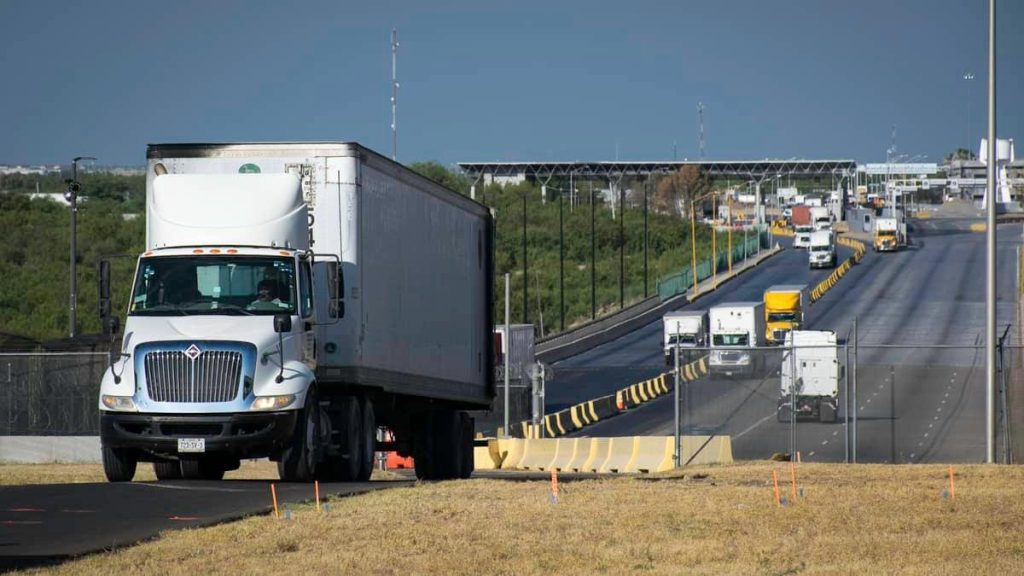Cross-border trucking is a critical component of global trade, connecting markets and driving economic growth. However, operating across international borders comes with unique risks and challenges that require careful planning—especially when it comes to insurance. Without the right coverage, trucking companies and drivers can face significant financial exposure from accidents, cargo claims, or regulatory issues. In this article, we’ll explore essential insurance tips designed to help cross-border trucking professionals protect their assets, comply with complex regulations, and ultimately achieve long-term success on the road. Whether you’re a seasoned carrier or just entering the international freight arena, understanding these insurance fundamentals is key to safeguarding your business every mile of the way.
Table of Contents
- Understanding Cross-Border Insurance Requirements and Regulations
- Choosing the Right Coverage for International Freight and Liability
- Navigating Claims and Risk Management in Cross-Border Operations
- Best Practices for Maintaining Compliance and Minimizing Insurance Costs
- Key Takeaways
Understanding Cross-Border Insurance Requirements and Regulations
When operating across international borders, trucking companies must navigate a complex web of insurance mandates that vary from country to country. It’s crucial to understand that standard domestic insurance policies often don’t offer sufficient coverage once you cross into foreign territories. Compliance isn’t just about avoiding fines; it protects your business from significant financial exposure tied to accidents, cargo damage, or third-party claims abroad. Insurers and regulators typically require proof of specific coverage types—such as liability, cargo, and environmental insurance—that meet or exceed local minimums. Ignoring these nuances can leave your operation vulnerable to severe legal and financial consequences.
To stay ahead, pay close attention to these critical factors:
- Local Liability Requirements: Ensure your policy satisfies the minimum liability limits, which may differ significantly from your home country’s standards.
- Cross-Border Certificates of Insurance: Obtain and carry these certifications to demonstrate compliance during inspections or in the event of incidents.
- Customs and Regulatory Bodies: Familiarize yourself with the insurance regulations of each country’s transportation authority and customs agencies.
- Additional Riders or Endorsements: Consider purchasing specific riders for high-risk regions or special cargo to avoid coverage gaps.
Choosing the Right Coverage for International Freight and Liability
When navigating the complexities of insuring cross-border shipments, selecting the appropriate coverage is paramount to safeguarding your freight and mitigating liabilities. It’s vital to understand that different international routes and cargo types demand tailored policies. Freight insurance must encompass not only the physical loss or damage during transit but also potential customs complications, theft, and delays. Opt for coverage plans that explicitly clarify liability limits and exclusions across jurisdictions, ensuring a seamless claims process no matter which border your shipment crosses.
Keep in mind key factors that influence your decision-making process, including:
- Type of Cargo: Perishable goods, hazardous materials, or high-value items require specialized endorsements.
- Mode of Transport: Combined land, sea, and air transport can introduce unique risks needing comprehensive insurance solutions.
- Legal Requirements: Different countries impose varied minimum insurance mandates, so compliance is critical to avoid costly penalties.
- Third-Party Liability: Protect against damages caused to other property or individuals during the transport process.
Partnering with insurers who specialize in international freight ensures your coverage aligns with evolving regulations and risk landscapes, providing peace of mind on every leg of your cross-border journey.
Navigating Claims and Risk Management in Cross-Border Operations
Managing claims in cross-border trucking involves more than just filing paperwork; it requires a comprehensive understanding of the differing legal frameworks and insurance regulations across countries. Prompt communication and meticulous documentation are vital to ensuring a smooth resolution. Trucking companies should prioritize establishing clear protocols that handle claims efficiently, minimizing delays and reducing financial exposure. Additionally, collaborating with local legal experts and insurance brokers can bridge gaps in compliance and expedite claim settlements.
Risk management extends beyond routine safety checks and vehicle maintenance when operating internationally. Companies must implement strategies that actively mitigate exposure to geopolitical risks, cargo theft, and unforeseen logistical disruptions. Key practices include:
- Conducting regular risk assessments tailored to each crossing point and transit route.
- Investing in advanced tracking and communication technologies for real-time monitoring.
- Training drivers on jurisdiction-specific regulations and emergency procedures.
- Securing multi-jurisdictional insurance coverage to ensure seamless protection.
These layered approaches empower trucking firms to not only respond effectively to claims but also anticipate and prevent incidents, preserving both operations and reputation across borders.
Best Practices for Maintaining Compliance and Minimizing Insurance Costs
Ensuring your fleet operates within regulatory frameworks is critical for avoiding costly fines and insurance penalties. Stay ahead by implementing rigorous internal audits and keeping detailed records of all compliance-related activities. Use advanced GPS tracking and electronic logging devices (ELDs) to monitor driver hours, routes, and vehicle conditions in real time. Additionally, regular training sessions focused on up-to-date cross-border regulations help drivers and managers maintain awareness of shifting rules, reducing the likelihood of infractions that can inflate insurance premiums.
Proactive risk management plays a vital role in controlling insurance expenses. Adopt a comprehensive maintenance schedule that prioritizes safety inspections and timely repairs to minimize breakdowns and accidents. Encourage a culture of safety by incentivizing defensive driving techniques and immediate reporting of near-misses. Key strategies include:
- Implementing a centralized incident reporting system for quick responses
- Leveraging telematics data to identify and correct risky behaviors
- Partnering with insurance providers who offer value-added services like risk assessments and driver safety programs
Key Takeaways
Navigating the complexities of cross-border trucking requires more than just careful planning and skilled driving—it demands a solid understanding of the insurance landscape to protect your business from unforeseen risks. By prioritizing comprehensive coverage tailored to international regulations, staying informed about policy updates, and working with knowledgeable insurers, you can safeguard your operations and drive with confidence across borders. Remember, the right insurance strategy is not just a requirement—it’s a crucial investment in the long-term success and resilience of your trucking enterprise. Stay vigilant, stay insured, and keep your wheels turning toward growth and stability.






